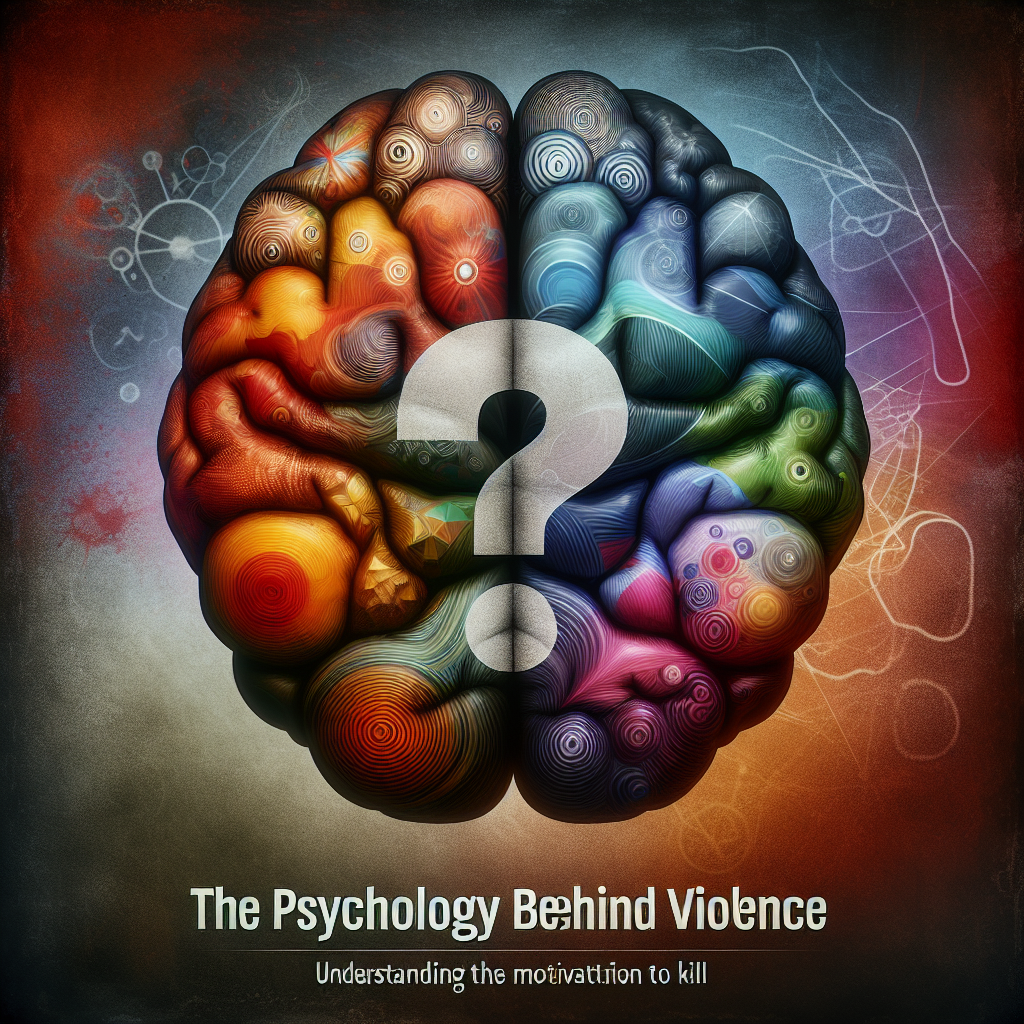Introduction
Violence has been an intrinsic part of human history, evident in everything from ancient wars to modern-day crime. Understanding the motivations behind such extreme actions is not just an academic pursuit; it’s essential for our collective safety and mental health. “The Psychology Behind Violence: Understanding the Motivation to Kill” delves into the complex mental landscapes that lead to these disturbing behaviors. This exploration can illuminate the darker corners of our psyche, offering us ways to intervene and prevent violence in the future.
The Complexity of Violence
Defining Violence
Before exploring the motivations, it is critical to define what we mean by violence. Violence can be classified into various categories, such as emotional, physical, and psychological harm. This article will primarily focus on physical aggression, especially lethal acts, which carry profound consequences not only for victims but also for perpetrators and communities.
Nature vs. Nurture: The Ongoing Debate
The age-old debate over nature versus nurture plays a significant role in understanding the motivation to kill. Are violent tendencies innate, or do external factors push individuals toward violence? Research indicates that both elements coexist; genetic predispositions can be exacerbated by environmental influences like trauma, socio-economic factors, and cultural norms.
Psychological Factors That Drive Violence
Mental Health Disorders
Studies show that certain mental health disorders, such as antisocial personality disorder and borderline personality disorder, can contribute to violent behavior. While not all individuals with these disorders are violent, their presence can increase the risk when combined with other factors, such as substance abuse.
Case Study: Jerod’s Journey
Jerod, diagnosed with antisocial personality disorder, engaged in multiple violent outbursts throughout his teenage years. After extensive therapy focusing on emotional regulation, he began to understand his triggers. This case illustrates how psychological interventions can mitigate violent tendencies related to mental disorders.
The Role of Trauma
Trauma, whether experienced in childhood or adulthood, is a significant predictor of future violent behavior. Individuals exposed to environments filled with violence are more likely to adopt aggressive responses themselves.
Case Study: Maria’s Background
Maria grew up in an abusive household. After years of therapy, she recognized how her upbringing shaped her actions. By addressing her past traumas, she could rebuild her life, showing how understanding trauma is essential in “The Psychology Behind Violence: Understanding the Motivation to Kill.”
Social and Cultural Influences
Culture greatly shapes individuals’ perspectives on violence. In societies where aggressive behavior is normalized or glorified, the motivation to kill can become more pronounced.
Case Study: The Influence of Media
A study explored the impact of violent video games on adolescents. While not a direct cause, these games often desensitize players to violence, potentially influencing their real-world behavior. Understanding these societal factors is crucial in addressing violent tendencies.
The Biological Perspective
Brain Chemistry and Function
Research shows that neurotransmitters like serotonin and dopamine play a role in regulating aggression. An imbalance in these chemicals can lead to impulsivity and violence. By studying brain function, we might better understand the biological motivations behind violence.
Genetic Factors
Certain genes have been linked to aggressive behavior. For example, variations of the MAOA gene, known as the "warrior gene," have been associated with increased aggression when coupled with adverse environmental factors.
Situational Triggers
Acute Stress and Frustration
Immediate circumstances can trigger violent behavior. An incident of road rage can escalate into a serious altercation if one party is already feeling stressed or threatened.
Substance Abuse
Alcohol and drugs can impair judgment and lower inhibitions, making violent outbursts more likely. Studies have shown that a significant proportion of violent crimes involve substances.
Table: Substance Use and Violent Crimes
| Substance | Percentage of Involvement in Violent Crimes |
|---|---|
| Alcohol | 40% |
| Cannabis | 15% |
| Stimulants | 25% |
| Opioids | 10% |
The Psychological Profile of Violent Offenders
Identifying Risk Factors
Understanding which individuals are at higher risk for violent behavior can dramatically improve prevention efforts. Risk factors may include:
- A history of violent behavior
- Low socio-economic status
- Lack of social support
- History of substance abuse
The "Profile" of a Violent Offender
Profiling violent offenders often reveals patterns of behavior and background markers, such as troubled childhoods, identity crises, and a need for control.
The Path to Intervention
Early Intervention Programs
Early intervention in at-risk youth can significantly alter life trajectories. Programs focusing on social skills, conflict resolution, and emotional intelligence can provide alternatives to violence.
Therapeutic Approaches
Understanding how to approach individuals exhibiting violent tendencies is vital. Cognitive Behavioral Therapy (CBT) has shown promise in helping individuals manage their thoughts and emotions effectively.
Conclusion
"The Psychology Behind Violence: Understanding the Motivation to Kill" is a multifaceted subject that requires a nuanced understanding of both internal and external factors. From mental health and biological influences to societal pressures, the motivations behind violence are as complex as humanity itself. By shedding light on these dynamics, we can pave the way for interventions that not only address but also prevent violent behavior in our communities.
FAQs
1. What are the primary psychological factors contributing to violence?
Common factors include mental health disorders, trauma, and substance abuse, all of which can influence a person’s propensity for aggression.
2. How does environment impact violent behavior?
An individual raised in a violent environment may adopt aggressive behaviors as a means of coping or survival, showing that social norms play a crucial role.
3. Can violence be prevented?
Yes, early intervention programs and therapy can provide individuals with tools to manage their emotions and reduce aggressive tendencies.
4. Is there a genetic predisposition to violence?
Certain genetic markers have been studied, but they often require environmental triggers to manifest in aggressive behavior.
5. What role does stress play in violent behavior?
Acute stress and frustration can serve as immediate triggers for violence, especially in individuals already predisposed to aggressive actions.
By creating a robust understanding of these various factors, we take one step closer to reducing violence and fostering healthier communities.

